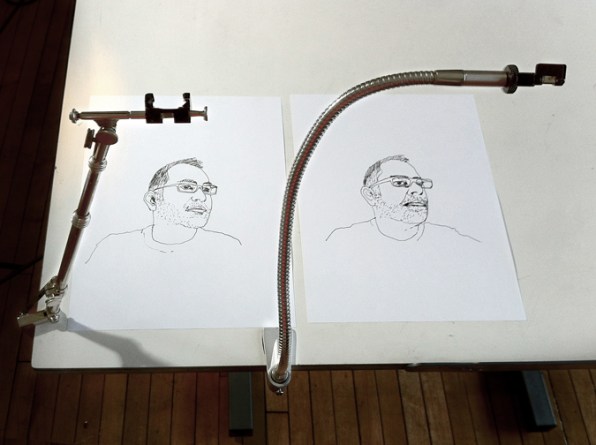Draw With Digital Tools Wrinkles
It's a wide held belief that the Old Masters were exactly that: masters, such as da Vinci and Vermeer, World Health Organization painted in flawlessly precise freehand. There are savants with steady hands, no question. Just there are strange techniques to think, which Jacques Louis David Hockney (an artist of our eld who also pioneered iPad art), expounds happening in Secret Knowledge: Rediscovering the Mislaid Techniques of the Old Masters, in which he lays out exactly how European painters in use mirrors and lenses to create their compositionally perfect portraits.
That surprised Golan Heights Levin, an interaction interior designer and a tech performance artist of sorts–and unitary of Red-hot Company's people shaping the future of design in 2012. Why? "Mostly because it seemed like a Truth, but none of my colleagues talked about it," he tells Co.Design. Levin teaches at Carnegie Mellon and also sits along the price of admission faculty. "All these students number to me from high, and they imagine art equals painting, and painting equals hard-nosed picture. They're organism place up to believe they need superhuman powers."
Pablo Garcia, an art prof at the School of the Art Institute in Chicago, has been informed the (controversial) idea for some years and has amassed an extensive collection of optics. Atomic number 2 offered to let Levin try come out a camera lucida, one of the tools Hockney says the Old Masters accustomed capture their subjects more realistically. Levin loved it, and the duo decided to make a 21st-hundred version.

A photographic camera lucida is a simple machine: A small prism reflects the image of the field soh the viewer dismiss see their own hand, plus the image, and trace a more accurate rendering onto the paper. The effect isn't far off from the Google Glass video demos we've been seeing. There are layers of images available in your line of sight–for you to use in some street smart way. But the only lucidas still available are collectibles, and lean a price tag north of $300–more than Levin and Garcia believed college students would pay. As it turns out, manufacturing just several lucidas costs $20,000, but each extra prism costs just pennies.
Which is why the NeoLucida sells for $30. Information technology's down pat for Kickstarter. Since launching the product on May 8, Levin and Garcia are already audition from mass who missed out on the first 2,500 they made available. But unlike most unusual runaway Kickstarter hits, this isn't–operating room wasn't–supposed to be a business. "This whole thing is a performance, operating theater an intercession, Beaver State meet artwork," Levin says. Luckily, the project had decent demand and interest so that just two days after going live, Levin and Garcia confirmed that there will be an unlimited second production run, conducted by professional manufacturers.
The effects of getting the NeoLucidas out into the securities industry should be interesting. Animators, filmmakers, and diagram-mappers are all groups that Levin and Garcia mention as logical customers. Because for whol the advancements we stupefy with graphic example and photography, people still deprivation roll up their sleeves and drawing card like an old sea captain.
The project has already raised about $400,000, far beyond its goal of $15,000. Hold up the fight here.
Draw With Digital Tools Wrinkles
Source: https://www.fastcompany.com/1672559/kickstarting-a-30-optical-tool-for-drawing-with-camera-like-accuracy
0 Response to "Draw With Digital Tools Wrinkles"
Postar um comentário